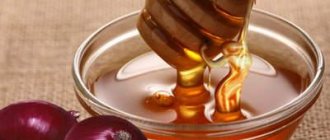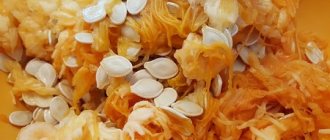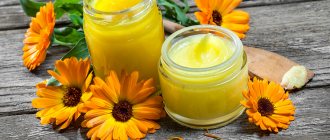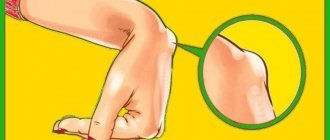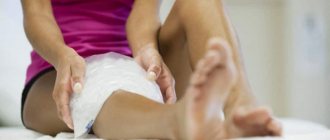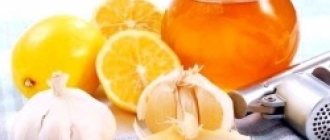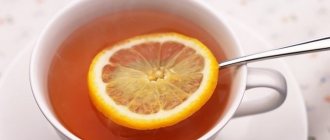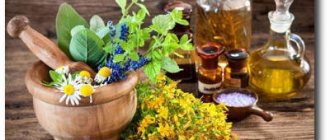General recommendations for temperature
Fever indicates that the body is fighting infection: high temperature stops the development of bacteria and viruses, causes blood vessels to dilate, due to which immune cells quickly penetrate to the source of infection and destroy its pathogens. For these reasons , doctors do not advise lowering the temperature if it does not exceed 38 degrees . Patients rarely listen to this advice, since hyperthermia is often accompanied by a feeling of weakness, drowsiness, headache, as well as symptoms characteristic of the disease that caused the fever.
If the problem is not caused by a serious pathology, antipyretic folk remedies can be used to bring down the temperature. When used correctly, they successfully reduce fever and, unlike medications, do not cause additional stress on the liver and kidneys, which are responsible for processing toxins and removing them from the body. For treatment to be successful, the following recommendations should be followed for an infectious or viral disease:
- Bed rest. The body takes a lot of energy and strength to recover. If the patient leads an active lifestyle, moves a lot, constantly spends time outside and traveling, communicating with other people, this will require additional energy expenditure and delay healing. We should not forget that a patient can infect another person if hyperthermia is caused by a virus or bacteria.
- Drink as much fluid as possible - dehydration leads to hyperthermia.
- If you have no appetite, do not force yourself to eat. During illness, the body arranges fasting days for itself, since digesting food requires additional effort and energy.
- Ventilate the room: during illness, musty and stale air forms in the room, filled with pathogenic microbes that can cause re-infection. Fresh air removes pathogens from the room, promoting healing. In this case, you need to ensure that there is no draft in the patient’s room.
Regarding walking, a lot depends on the disease. If the fever is caused by a sore tooth, staying outside is not limited. If the cause is an infection, doctors do not recommend walking at a temperature exceeding 37.5°C. Cool air narrows the pores of the skin, which slows down the removal of heat from the body and leads to an increase in the temperature of internal organs and to complications. In the warm season, the body heats up under the influence of the sun's rays, so in good weather it is advisable to walk in the evening or spend time in the shade in calm weather or in a covered courtyard.
Compresses and rubdowns at fever
It often happens that the temperature cannot be brought down with the help of antipyretics. Wiping can correct the situation at home. This method improves well-being, relieves fever and lowers temperature.
In case of low-grade fever, you can wipe the body with a towel or napkin moistened with ordinary warm water. This method is used for children who cannot tolerate vinegar.
For vinegar rubdowns, prepare a solution: add a large spoonful of vinegar to a plate of water at 38 degrees and stir. Moisten the fabric in the resulting product and begin to wipe the body from the neck onwards, moving lower and lower, without missing a single fold.
After this procedure, the body is covered with a light blanket or sheet. Before wiping, the skin should be checked for damage so that the vinegar does not burn the skin later. If there are wounds, wipe with water.
To prepare a rubbing alcohol solution, take 1 liter of warm water and stir a tablespoon of alcohol or vodka in it. The resulting product is used to wipe a child or adult from neck to feet. But for children under six years of age, the temperature is reduced with vinegar, not vodka.
How to lower the temperature at home? To do this, you can use folk remedies that will reduce the temperature
Herbal rubdowns are also anti-inflammatory. They are used instead of water ones if vinegar and alcohol are contraindicated. Herbal infusions are prepared from yarrow, chamomile or St. John's wort.
Add a spoonful of herbs to a liter of warm water and bring it all to a boil. Soak a sheet in the cooled solution, wring it out and wrap it around the child, leaving only the hands and face untouched.
Wrap it in a thin, dry diaper on top and then cover it with a warm blanket. Then the child is kept in this state for 40 minutes, while giving him plenty of fluids. You can cover it with another blanket if your baby suddenly gets cold.
Compresses for fever are prepared as follows: a cotton cloth is moistened in a warm herbal decoction, squeezed out and applied to the forehead, temples and groin area every 10 minutes.
Folk antipyretic external agents
To bring down the temperature with folk remedies, you can use methods of external and internal influence. External ones include:
- compresses;
- rubdowns and wraps;
- baths.
Compresses
Compresses will help reduce body heat. They are a bandage soaked in a medicine or folk remedy, which is applied to the forehead, wrists, and calves. If the temperature does not exceed 38°C, warm compresses are suitable, otherwise it is better to give preference to cold lotions: warm compresses increase body temperature. Change as it dries until the heat begins to subside.
Vinegar compresses help reduce hyperthermia. Vinegar tends to evaporate quickly, cooling the surface of the skin. To prepare the solution, mix a tablespoon of vinegar in a glass of water. To enhance the effect, you can make a stronger concentrate by mixing water and vinegar in a 2:1 ratio. Then soak gauze or a piece of loose, clean white cloth in the solution, place it on the forehead and calf muscles, and wrap the patient in a blanket. The compress should not be used if you are allergic to vinegar. In this case, you should limit yourself to plain water.
If mild hyperthermia is accompanied by a cough, hot potatoes boiled in an enamel pan will help. When it is ready, puree it by adding a little vinegar. Wait until the mixture becomes warm, then place the mixture on a linen towel. Place on the forehead, temples, elbows, wrists and wait until the compress cools down. It is better to make a potato compress at night, before going to bed.
When hyperthermia is accompanied by a sore throat, inflammation of the larynx, bronchitis, laryngitis, an alcohol compress can be used. It can be used only in the absence of high fever or purulent processes: alcohol is a warming agent, so it can provoke fever and increase inflammation. To prepare a compress, you need to dilute alcohol and water in equal proportions, moisten gauze and place it on the throat and chest. Place a plastic bag and a layer of cotton wool on top, secure and hold for 6 hours.
Rubdowns
Rubbing will help reduce the temperature. In this case, a vinegar solution is also suitable, which should be used to treat the entire body, moistening a cloth in the liquid. Vinegar can be replaced with alcohol, diluting it with water in proportions of 1 to 1. Wipe, starting with the hands (wrists, elbows, armpits), avoiding the area of the heart, abdomen, and groin area. You need to act with light movements, lightly touching the body. This is explained by the fact that intense and strong pressure increases blood circulation, which leads to hyperthermia.
You can quickly cool the body with the help of a wrap, for which a cotton sheet is immersed in a solution of chamomile, yarrow or St. John's wort, squeezed well and wrapped around the body for 40-60 minutes. As the liquid evaporates, it will quickly cool the hot body. To prepare a folk remedy for fever, you need 2 tbsp. l. pour a glass of boiled water over the herbs and keep in a steam bath for 25 minutes.
During the procedure, you should give warm drinks: the stronger the sweating, the faster the body will cool down. If the patient is cold, put a blanket on him. After an hour, remove the sheet, dry your body, and put on dry underwear. The patient should remain in bed. Cold wraps can only be used once a day at temperatures above 38°C. In less intense heat, you can use hot wraps.
Baths
There are two opinions regarding taking baths for hyperthermia. Many doctors do not recommend taking baths, as they lead to overheating of the body and can cause complications . In addition, the body is exposed to cold and warm air, which can lead to negative results. Among them:
- a sharp rise in temperature and, as a result, deterioration of the condition;
- problems in the functioning of the cardiovascular system: shortness of breath, irregular heart rhythm, bluish skin.
You can wash in the shower at a water temperature not exceeding 38°C for no more than 15 minutes. It is advisable not to wash your hair. Wipe dry. There is no need to completely abandon water procedures: they are useful in the sense that they cleanse the skin not only of dirt, but also of toxins that come out along with sweat. However, in case of hyperthermia, you should avoid them and limit yourself to wiping.
Articles on the topic
- Folk remedies for gout for home treatment
- Folk remedies for erection - how to strengthen it at home with food, decoctions and infusions
- Folk remedies for arthrosis - how to treat at home, effective methods and methods
Another opinion is that you can take baths with mild hyperthermia and more or less tolerable health. The water temperature should not exceed 38°C. You can add a few drops of eucalyptus, menthol or lavender essential oil. A herbal bath is useful, for which it is recommended to use mint, chamomile, sage, and pine needles. To prepare the solution, you need to pour 300-400 g of plants into 10 liters of boiling water, leave for an hour, strain and add to the bath. The duration of water procedures is no more than 20 minutes, after which you go to bed, wrap yourself in a blanket, drink raspberry or linden tea.
Fruit drinks and drinks
Antipyretic drinks are prepared at home based on raw materials containing a large amount of ascorbic acid, which provides anti-inflammatory, tonic healing properties.
Honey-lemon drink
Pour 250 ml of warm water into a faience glass. Dissolve lemon juice in it - 3 tbsp. l. When intensively kneading, add honey - 30 g. This drink is recommended to be consumed before bed.
Herbal infusion
Combine thyme, oregano and St. John's wort herbs in equal volume fractions with the addition of mint leaves and birch buds. The dried raw materials are crushed. Take 2 tsp. mixture, pour into 250 ml of boiling water. Cover with a soft woolen scarf and leave until cool. After straining, add ½ tsp. honey Put on woolen socks, drink the broth and lie down under a blanket for 30 minutes.
Raspberry-linden infusion
When the temperature rises to 40°C, prepare a healthy infusion. Place dried linden flowers and raspberries - 30 g each - into a small enamel bowl. Brew with fresh boiling water - 400 ml. Close the lid tightly and wrap it in a terry towel. After 40 minutes, filter.
The resulting volume of infusion is divided into two equal portions. Drink in small sips in the morning and evening, and then lie down under a warm blanket. If relief does not occur, you should call an ambulance.
Elderberry with mint and linden
To get one of the most effective antipyretics, you will need to take several varieties of dried raw materials (elderberry flowers with linden, as well as mint leaves). Grind and knead in equal parts.
Measure out 30 g of the mixture, add hot water - 60 ml. Leave for 20 minutes, heating the composition in a water bath. Filter after cooling. Divide the resulting volume of decoction into three servings, drinking it per day. You can add honey.
Lingonberry-cranberry juice with currants
Combine ripe red currants with aromatic lingonberries, frozen cranberries and red currants. Rinse and then place in an enamel dish, maintaining equal proportions.
Mash with a wooden masher and grind the resulting puree with honey to taste. While stirring, pour in boiling water in such an amount to obtain a rich, thick drink. It is recommended to drink 200 ml of heated fruit drink before breakfast, lunch, and one cup before bed.
Nettle infusion
Chopped dried nettle - 1 tbsp. l. put in a thermos. Add 200 ml of boiled water. After 30 minutes, the infusion is filtered. Take an antipyretic every 6 hours, a tablespoon.
Chamomile infusion
Dried chamomile inflorescences are rubbed in the palms of your hands. Dial 3 tbsp. l. raw materials. Infuse it in 250 ml of boiling water for 30 minutes. In filtered form, take 1/3 cup at regular intervals.
Tansy with dandelion and linden
Combine crushed dandelion rhizomes with tansy and linden inflorescences, maintaining a ratio of 1:2:3. Place 3 tbsp in an enamel ladle. l. mixtures. Brew with boiling water - 250 ml. After boiling for three minutes, remove from heat and cool. It is recommended to take one and a half glasses twice a day with honey.
Coltsfoot with barberry and elderberry
Chopped foliage of coltsfoot is added to elderberry flowers. Take 1 tsp of dried ingredients. Place in a thermos, adding ½ tsp to the mixture. barberry berries. Steam with boiling water - 200 ml. After half an hour, the infusion is filtered. Every half hour take 2 tbsp. l.
Mustard
Place mustard seeds in a bowl - 1 tsp. Steam them with a glass of boiled water. Leave under a double napkin until cool. Drink after straining once a day.
Basil
Wash and finely chop the basil leaves. Set aside 1 tsp. into a cup of boiling water. Leave for 15 minutes. The filtered volume is divided into four servings, drinking at equal intervals throughout the day.
Ginger
Peeled grated ginger root - ½ tsp. Brew with boiling water, which will need 250 ml. Filter after 20 minutes. Drink four times before evening.
Products for internal use
You can bring down the temperature with teas made from herbs and berries. They give especially good results in combination with Paracetamol, Aspirin, and other antipyretic drugs. In addition, drinks are a “lifesaver” if for some reason there are no medications at hand. Herbal teas stimulate the immune system, warm a sore throat, and the beneficial elements they contain have a positive effect on the functioning of various organs and systems.
Raspberries, which contain salicylic acid, are effective for hyperthermia. This is the main active ingredient of the well-known Aspirin, so combining this drug with raspberry tea is not recommended to avoid overdose and complications. In addition, it contains vitamins C, A, B, and organic acids. Another unique property is that while other berries lose most of their nutrients when cooked, raspberries retain them. A folk remedy for fever can be prepared as follows:
- Pour a few tablespoons of berries or raspberry jam into 0.5 cups of boiling water. Leave for 20 minutes.
- Mix dry berries with linden (1 tablespoon each), pour two cups of boiling water. Keep on low heat for several minutes. For hyperthermia, drink a glass per hour.
Cranberry has not only antipyretic, but also antimicrobial, anti-inflammatory, and diuretic properties . To prepare the drink you need:
- Place 150 g of fresh cranberries in a saucepan and puree them using a masher. Place the berries in cheesecloth and squeeze out the juice. Place the cake in a saucepan, add 600 ml of water, put on fire, bring to a boil, strain, add half a glass of sugar and stir well. When the drink has cooled, add cranberry juice, stir, and then drink.
- Soak the berries in boiling water; when softened, pass through a juicer. Then mix 100 ml of juice with 3 liters of water, put on fire, bring to a boil, cook for 5 minutes. Strain the broth, add a couple of tablespoons of honey.
- Thaw half a kilo of berries and pass through a juicer. Pour 1 liter of boiled water into the juice, add honey or sugar. This cooking method preserves the nutrients as much as possible.
For hyperthermia, St. John's wort tea is useful, as it has anti-inflammatory properties. To prepare it you need 1 tbsp. pour 0.5 liters of water over the herbs, boil over low heat for 5 minutes, let it brew. If desired, you can add rosehip or mint to the drink, which also has antipyretic properties. A folk remedy for fever: drink one glass twice a day.
Peppermint tea not only reduces hyperthermia, but also facilitates breathing, normalizes blood pressure and heart function, and is effective for headaches. To prepare it, you need to pour boiling water over the mint and let it brew for 15 minutes. You can add lemon or a slice of lime to the drink. Another recipe - 1 tsp. herbs are mixed with 1 tsp. black or green tea, pour boiling water and leave for 20 minutes.
A drink made from 1 tbsp will help reduce the heat. milk, chopped garlic clove, honey. Mix the ingredients and drink in small sips. Although milk is considered a healthy drink during colds, it should be avoided when the temperature is very high as it will be difficult for the body to digest.
Folk antipyretic products
Some products have excellent antipyretic properties. For example, raspberries contain salicylic acid, which helps reduce fever as effectively as aspirin.
Raspberry infusion is prepared according to the recipe: pour a few spoons of berries into 100 ml of boiling water and leave for 20 minutes. If there are no fresh berries, use raspberry jam.
Dried raspberries can be mixed with linden blossom (1 tablespoon each) and pour 400 ml of boiling water. The mixture is cooked over low heat for several minutes. At high temperatures, drink 200 ml of tea every hour.
Another berry, cranberry, is considered an antipyretic drug. It simultaneously has anti-inflammatory, antimicrobial and diuretic effects. To make cranberry juice, the berries are washed in boiled water and passed through a juicer. The juice is poured with clean water in a proportion of 100 ml per 3 liters, respectively. The broth is boiled and filtered, and then a few tablespoons are added to it. honey The drink is taken in the morning on an empty stomach, one glass per day.
Spices are added to herbal teas to enhance the effect: cardamom, ginger, cumin or bay leaf. Thanks to this, the body's defenses increase during illness. The main thing is not to overdo it, as spices increase blood circulation, which can lead to a worsening of the patient’s condition.
St. John's wort tea has anti-inflammatory properties and helps restore immunity after illness. To ensure that the tea is not too bitter, 1 tbsp. l. crushed herbal composition is poured with 0.5 liters of water. The water is boiled over low heat for 5-7 minutes, then the broth is allowed to brew in a warm place. To enhance the taste, add rose hips or mint to the drink. The drink is taken 2 times a day, 1 glass.
A mint drink is good for fighting fever and colds. Dry mint (1 tsp) is mixed with regular tea (1 tsp) and poured with a glass of boiling water. It is better to steam the ingredients in a porcelain container for 20 minutes. Drink mint tea once a day in the morning. It not only quickly reduces fever, but also helps with headaches.
You will learn what to do at elevated temperatures in this video.
Folk remedies for fever in adults
Reducing temperature using folk remedies in adults and children is somewhat different. A striking example is the use of alcohol. While in adults the use of alcohol to bring down a low temperature is allowed, for small children, and even more so for newborns, this method is not suitable at all . However, you need to be careful when using alcohol. It is better to avoid drinking cognac or vodka internally, even if we are talking about adding a few tablespoons of an alcoholic drink to tea. Ethanol causes:
- Blood thickening.
- Spasm of blood vessels.
- It has a toxic effect on various organs and systems, primarily the liver, kidneys, and brain. This prevents the body from fighting the disease, since it directs part of its energy to eliminate the consequences of ethyl alcohol poisoning, even in small quantities.
Instead of alcohol, it is better to give preference to citrus fruits, which not only help reduce hyperthermia, but also have an anti-inflammatory effect. Oranges, lemons, and grapefruits contain abundant amounts of vitamin C, which has a powerful immunomodulatory effect. Compotes from strawberries, raspberries, cranberries, and decoctions of herbs (elderberry flowers, linden) are useful during illness.
How to reduce fever at home
Photo: Yandex.Pictures
Black currant
- Take 3 tablespoons of blackcurrant buds and leaves. Pour a liter of boiling water in a ratio of 1/2. Let it brew for two hours, then strain. Take warm, 100–150 grams 3 times a day.
Raspberries
Raspberry is one of the most excellent diaphoretic and antipyretic remedies. The healing effect is achieved by salicylic acid, which is found in all parts of the plant.
- Select the thickest raspberry stems, wash, break into small pieces and brew with boiling water. The infusion should brew until it turns dark crimson. Drink the medicinal infusion warm in several doses.
willow bark
Another natural source of salicylic acid is willow bark.
- To prepare an antipyretic and diaphoretic infusion, take one tablespoon of willow bark and brew a glass of boiling water. Let it brew for 2 hours. Drink 1-2 tablespoons 3 to 5 times a day before meals.
Burdock root decoction
A good antipyretic remedy is a decoction of burdock roots.
- For the decoction, take 4 tablespoons of roots per 4 cups of water. Place on the stove and boil until the volume is reduced by half. Remove from heat, strain, add 3 tablespoons of honey to the broth. Take a glass 3 times a day.
Antipyretic collection
- Take 2 parts of coltsfoot leaves, 2 parts of willow bark, 1 part of oregano herb. Brew one tablespoon of the mixture with a glass of boiling water. Let it brew for half an hour. Drink the infusion hot, 1/2 cup 3-4 times a day.
Linden against high temperature
Photo: Yandex.Pictures
High temperature is not a reason to panic when healing linden is at hand, because linden flowers are a proven folk remedy for relieving fever over the years.
- Pour boiling water over the flowers, just like regular tea. Add the peeled peel of one apple and a spoonful of honey. Drink linden tea hot, several cups at a time.
Folk remedies for fever for children
With hyperthermia, rubbing with alcohol is strictly prohibited for young children, as this can cause poisoning. It is not advisable to give fruit drinks or compotes to babies under one year old, as these drinks can cause allergies. Drinks with honey and lemon, and herbal decoctions of several herbs are not recommended for children under three years of age. After the age of three, you can drink a decoction of coltsfoot, marshmallow, and chamomile. To reduce the temperature for children of any age, the following is suitable:
- Rubbing the body with vinegar solution or plain water.
- A cabbage leaf applied to the forehead works well as a compress.
- Rubbing your feet with badger or bear fat.
- Enema with soda or saline solution (1 tsp per 250 ml of warm water). Children up to six months are given 30-60 ml of solution, and children up to one year – 120-180 ml. An enema is useful because it removes toxins from the body that interfere with recovery. You can’t give an ordinary water enema, as it can worsen the baby’s condition.
- When the baby turns one year old, in case of hyperthermia, you can give compotes from apples, pears, and dried fruits.
Five ways to lower your temperature without medication
Rubdown
To reduce the patient’s temperature, moisten a sponge or towel in cool water, wring it out and carefully wipe the torso, face, and limbs. Droplets of liquid remaining on the skin are allowed to dry on their own. To enhance the effect, add a few drops of table vinegar or vodka to the water in a 1:1 ratio, writes the Neboleem portal.
It is better to wipe children with water at room temperature (otherwise the procedure may provoke shock and febrile convulsions caused by vasospasm). The procedure of wiping with water, even water at room temperature, has the effect of reducing fever by 1–2 degrees within 1–1.5 hours.
Applying ice
To reduce the temperature, ice is split into small pieces, placed in a plastic bag and applied to the projection sites of large vessels: the forehead, axillary areas, inguinal folds, popliteal fossae. To protect the patient from hypothermia, place a folded cotton towel between the skin and the ice. It is better not to continue applying ice for more than 5–7 minutes; after a quarter of an hour the procedure can be repeated.
Cool enema
An antipyretic enema is an unpleasant procedure that is recommended if all other methods of reducing the temperature are unacceptable or have not produced tangible results. For these purposes, use warm water, usually 2 degrees lower than the current body temperature, with salt (at the rate of ½ tsp per 100 ml of water). The amount of liquid for an enema depends on the age of the patient:
- 1 year – 120 ml;
- 2 years – 200 ml;
- 5 years – 500 ml;
- over 10 years – 1 l.
All of the above physical methods of reducing body temperature (rubbing, applying ice, enema) are contraindicated for children under one year of age, especially those with a tendency to seizures or heart defects. In addition, these procedures should not be used in case of cold hyperthermia (chills, icy extremities, bluish skin color) - in this case they will only aggravate the patient’s condition.
Drink plenty of fluids
Drinking plenty of fluids at high body temperatures is recommended so that the patient has something to sweat - and sweat has a high cooling effect. With this drinking regime, the elimination of toxins is activated, and fluid reserves lost during sweating are replenished in a timely manner.
When treating ARVI, it is recommended to drink drinks rich in vitamin C: rosehip decoction, dried fruits, cranberry juice, tea with lemon, orange juice. Tea with raspberry jam and other antipyretics increases sweating, but you should drink something else before drinking it.
Drinks should be drunk slowly, in small sips, so as not to cause vomiting. If you feel hot, the drink should be warm (about 30 °C), and if you have chills, it should be hot. In order for the body to have somewhere to give off heat, the air in the room must be cool (no more than 18 °C).
Natural antipyretics (antipyretics)
Natural antipyretics are fruits and plants that have antipyretic properties. The first group of such plants contains salicylic acid, which is part of aspirin, only in a lower concentration. These are strawberries, raspberries, cherries, black and red currants, prunes, oranges.
You can eat berries and fruits in any form, but it is better as fruit drinks and jam added to tea. The second group of antipyretics are plants with a diaphoretic effect: oregano, birch buds, calendula, linden blossom. It is better to prepare a decoction of them: 2 tbsp. l. dry raw materials, pour 200 g of boiling water and leave for 2 hours.
Regular honey is also an antipyretic, and it contains salicylic acid and has a diaphoretic effect. In addition, honey strengthens the immune system, thereby providing an antibacterial and antiviral effect. Any natural antipyretics should be used with caution, as they can all cause allergies.
And in conclusion, it is worth noting that reducing fever by non-medicinal means is permitted as an emergency measure or in the case of persistent hyperthermia that is not amenable to drugs. However, a decrease in temperature does not exclude contacting a doctor to prescribe treatment.
Video on the topic:
Author: neboleem.net
What not to do at high temperatures
In case of severe hyperthermia, inhalation should not be done. Although this procedure reduces the manifestations of rhinitis and cough, under the influence of heat the temperature rises, which negatively affects the general condition. In addition, for hyperthermia, doctors do not recommend:
- Warming up, massage, warming compresses, mustard plasters, hot baths and showers, sauna.
- Rubbing is contraindicated if the fingers, toes, and feet are cold or there is chills.
- Do not give the patient cold drinks and water: they can provoke vasospasm.
- Eat through force - in the absence of food, the body does not waste energy on digesting and processing food, which speeds up recovery.
- A fan should not be placed at the patient's bedside to cool the patient's body. Any draft during illness is contraindicated and is fraught with complications, including pneumonia.
- You should not wrap yourself tightly or cover yourself with a very warm woolen or synthetic blanket, as this leads to overheating of the body and aggravates the situation.
- Do not heat or humidify the air in the room where the patient is located.
How to reduce a child's fever using folk remedies
When a child’s TT increases, we worry, especially if the readings are above 38°. If the baby is vomiting, he is lethargic, there is no question of folk remedies.
You need to give a paracetamol-based antipyretic and call a doctor.
If the child is active and has symptoms of a common cold, you can take on board some traditional medicine tips:
- Undress the child and be sure to remove the diaper. If your feet are cold, wear socks.
- Wipe with water. It should be a comfortable temperature. This is definitely better than vinegar and vodka.
- Ventilate the room. The air in the room where the child is located should be cool and fresh.
- Offer to drink more often. Water, unsweetened compotes, fruit drinks are suitable. You can use weak linden or chamomile tea if you are not prone to allergies.
- Breastfeed. Human milk is almost 90% water and contains a wide range of immunological defense factors. Therefore, breastfeeding is definitely worth it.
Well, again, many people recommend enemas. I am categorically against it, not only because it is unpleasant. Enemas change the intestinal microflora and can cause abdominal pain and diarrhea.
Now many pediatricians are against “litichka”. This is a medicinal mixture of three components: an antipyretic (usually analgin), an antispasmodic (no-shpa) and an antihistamine (suprastin or diphenhydramine). But still, the triad is often used at very high rates, and is used very effectively.
My opinion about “litichka”. In emergency cases, this may be the only way to bring down the temperature. I am against widespread use, but sometimes complications from high body TT are more dangerous than a one-time injection of a lytic mixture.
When folk remedies are not enough
Hyperthermia is a reaction to a pathological process occurring in the body, and therefore is a reason to call a doctor, who, after examination, will make a diagnosis and prescribe a course of treatment. You should not leave things to chance if the temperature above 38°C does not subside for more than three days, and immediately seek help if the fever is more than 39°C. You should consult a doctor if hyperthermia is accompanied by:
- convulsions;
- severe headache;
- difficulty breathing;
- problems with swallowing;
- vomiting, diarrhea;
- green sputum;
- disorder of consciousness;
You should not hesitate if children under one year old have a high fever for several hours. At this age, the thermoregulation system is imperfect, so babies quickly lose heat and moisture, which, if left untreated, can cause dehydration, convulsions, breathing problems and other complications. If a doctor is not available, antipyretic medications (eg Paracetamol for children) may be necessary.
When is the temperature dangerous to health and what
Therapists of evidence-based medicine and WHO recommendations adhere to a simple rule - do not lower the temperature below 38-38.5°. But there is one “but”. There are people who tolerate even 39° well. And there are those who feel bad even at 37.5°.
Therefore, it is important to understand here: you need to focus on personal feelings. If it’s bad, it’s better to take the pill without waiting for it to rise to the recommended 38°. The same goes for children.
Interesting fact! When TT increases to 38°, the production of natural interferon begins, which kills pathogens. This is what the recommendations are about.
What indicators can be called life-threatening? A temperature above 39° for 3 days or more can lead to pathological changes in the body:
- Damage to the central nervous system;
- Dehydration, intoxication;
- Poor circulation;
- Reduced blood pressure;
- Increased blood viscosity.
If a high temperature persists for more than 3 days, hospitalization, all tests and antibacterial therapy are required.
In some cases, you need to bring down the temperature immediately, without waiting for possible complications. These are situations when:
- Convulsions are observed;
- There are chronic diseases of the heart and blood vessels, diabetes mellitus, pathologies of the endocrine system, damage to the central nervous system;
- General health worsens.
This is interesting! The normal TT for a healthy person is 35.5-37.2°. The average body temperature in men is 0.5-0.7 ° lower than in women.
Is it necessary to lower the temperature?
Before you learn how to bring down a child’s temperature using folk remedies, you need to talk about acceptable norms and boundaries. Most viruses and bacteria die at a body temperature of 38 degrees. That is why, by lowering the thermometer level until this mark is reached, you give the disease every chance of further progression. Doctors strongly recommend using antipyretic drugs, including folk remedies, only when the value is above 38.5 g.
However, there is a caveat to this rule. If a person does not tolerate fever well (severe weakness, clouding of consciousness, pain occurs), then it is better not to allow high values. When it comes to a child prone to seizures, the temperature should be reduced from 37.5 degrees. In this case, you can use medications or folk remedies.
6 effective folk recipes for temperature
You can bring down a fever during a cold without medication, using proven folk remedies. Here are some of them:
- Vinegar compress - roll a piece of gauze across the width of the forehead, then dip it in 9% table vinegar, squeeze and apply to the forehead. Then change the compress as the gauze warms up, and very soon the patient will feel relief.
- Wiping with vodka or medical alcohol - dilute the alcohol with water (1:1) and moisten a towel in it, then treat the patient’s elbows, wrists, armpits and ankles. But vodka rubbing is contraindicated if a person has cold extremities.
- Fried onion - fry the onion in a frying pan and eat at the first symptoms of fever. In the future (if there is significant deterioration), the remedy will not be effective.
- Lemon juice - 1-2 s. l. Dilute freshly squeezed lemon juice in a glass of warm water, add 1 tsp. sugar and drink in small sips. Lemon juice diluted with water is also used to wipe the body. Relief usually occurs within an hour.
- Linden tea - 2 tbsp. l. dry herbs, pour a glass of boiling water, cover and let steep for 20 minutes. Drink half a glass 2 times a day.
- Natural honey - 1 tsp. Dissolve honey in a glass of warm water and drink. Repeat the procedure 2-3 times a day.
In case of an allergic reaction to a particular drug (symptoms: rash on the body, redness of the skin, itching), treatment must be stopped.
